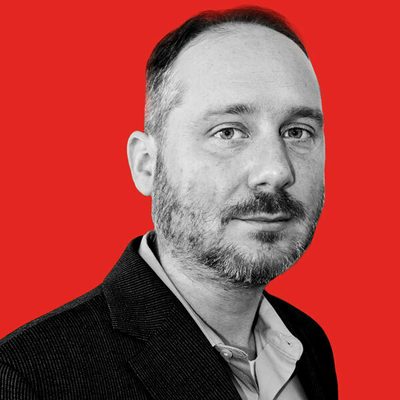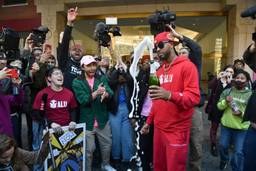
U.S. employers have never been particularly accepting of unions. Yes, there were a few decades after World War II when most employers engaged in a largely stable pattern of collective bargaining that recognized unions as junior partners in industry. Wage increases kept pace with gains in productivity, and union endorsements were courted by both parties. But, as heavily as that postwar labor relations compact features in the rosy rhetoric of union boosters who decry global capitalism and the modern GOP, the truth is that corporations have been periodically going to war against their workers far more often they’ve occasionally conceded their basic humanity.
Two new books shed light on the sustained union-busting campaigns that bookended that all-too brief period of labor-management détente. One focuses on the innocuously named “open shop” drive, which was a vicious nationwide union-busting campaign that began at the dawn of the 20th century and lasted well into the New Deal era. The other documents how the last great wave of worker militancy was smashed by a coordinated union-busting drive that anticipated Ronald Reagan’s presidency by more than a decade.
Reform or repression?
The unions that managed to survive the turbulent boom-and-bust cycle of the 19th century were largely organized on a craft union model that bears only a slight resemblance to today’s trades. Unions not only trained their members in their craft skills, but also determined the process, materials and speed of production. Employers had to contract with strong unions for a certain number of orders at prices that the unions determined.
The “open shop” drive was a coordinated effort by industry associations like the National Association of Manufacturers for bosses to gain complete control over production decision-making. This is the subject of Chad Pearson’s Reform or Repression: Organizing America’s Anti-Union Movement.
As Pearson compellingly documents, open shop campaigners sought to place their movement within the mainstream of the vaguely-defined “progressive movement” that preceded the Great Depression. Corporate executives railed against “union dictation,” and claimed their aim was to wrest control from union contracts in order to promote harder-working men. The breakfast cereal magnate C.W. Post claimed his union-busting work was necessary to protect children from picket-line violence. Some of the earliest appearances of the noxious slogan “right to work” come from this era.
That phrase was disingenuously employed to convey a sense of freedom for workers to not have to pay fealty to a union in order to get hired for a job. In practice, the “freedom” to not join a union was paired with a blacklist for those who chose to do so. Promoting “harder-working men” was a way of speeding up Taylorist production lines to sweatshop standards. And violence on picket lines was almost always instigated by privately hired armies of Pinkertons and other assorted spies and mercenaries.
Open shop campaigners did find allies within the broad political class of self-styled “progressives” who — then as now — did not root their efforts in the centrality of class politics. For example, it is somewhat shocking to read in Reform or Repression about “open shop” endorsements from Louis Brandeis — the attorney who negotiated the vaunted “Protocols of Peace” in the New York City garment industry. Without a base of actual workers, these earlier progressive men supported unions in the abstract, but were uncomfortable with the grisly details of strikes, boycotts and enforcing the union shop that were necessary to maintain unions as a permanent presence in the economy.
In this hair-splitting, open shop advocates probably found their biggest hero in Theodore Roosevelt. The trust-busting “progressive” was the first sitting president to weigh in on industrial disputes and mediate settlements that involved pay increases and other concessions to striking workers. He also steadfastly refused to endorse any deal that forced any employer to recognize any union as the exclusive representative of its workers.
Open shop organizations also recruited “free men” to be face of their drives. We can call them scabs, but forcing workers to join a union before they could get the job rubbed some the wrong way, and bosses exploited this.
Pearson has a good eye for vivid character studies. A particularly engrossing chapter contrasts the stories of two very different class traitors in the Cleveland open shop movement: John A. Penton and Jay P. Dawley. In the 1880s, Penton was president of a craft union of ironworkers that competed for worker loyalty with a more established union called the Iron Molders Union (IMU). In those days, unions competed to see who could organize the most militant protests. A campaign that ended in a union contract could mean terms that forced workers to join the victorious union — or face termination — If they wanted work. By 1893, Penton’s union had been forced to merge with the larger IMU.
The bitterness of that defeat curdled and warped Penton’s principles. He became an “open shop” advocate, ostensibly because men should be free to choose which organization to join — or not join. In practical effect, he served as a propagandist and recruiter of scabs for the industry’s campaign to break the Cleveland IMU in 1900, where he was regarded as “The Dr. Jeckyl and Mr. Hyde of the Labor Movement.”
Dawley was a compatriot of Penton’s, a lawyer who secured injunctions against union picket lines and defended Penton’s efforts to arm his scabs with .38 caliber revolvers. The former president of the Cleveland Employers Association shocked his white shoe comrades by coming to the aid of the city’s striking garment workers in 1911. It was no small coincidence that Dawley’s conversion-by-fire came just two months after the actual fire at New York’s Triangle Shirtwaist Factory. That the picket lines were mostly full of women helped him finally see that the violence and law-breaking that he so abhorred in industrial conflict was a mostly one-sided affair — and that it was his (former) side that was perpetuating most of it.
Dawley spent the rest of his life as an advocate of union causes — albeit one who counseled peaceful bargaining and arbitration over strikes and boycotts. There’s a lesson about the power of narrative and visible leaders here. The average union member today is more likely to be a black or brown woman than some Archie Bunker cliché. Labor can pick up unexpected allies by putting the actual workers whose livelihoods are on the line front and center in our campaigns.
Knocking on labor’s door
How women and people of color began to organize themselves into the mainstream of the labor movement is the subject of Lane Windham’s new book, Knocking on Labor’s Door: Union Organizing in the 1970’s and the Roots of a New Economic Divide. It is also a tale of how the open shop drive came roaring back to life.
This is an essential read for anyone grappling with the question of why modern union organizing isn’t more successful. It is also a much-welcome corrective to the false narrative that unions simply stopped trying to gain new members sometime after the merger of the AFL and CIO.
In fact, the early 1970s brought a major wave of worker militancy, the kind that periodically roils the United States. The massive teacher rebellion of unionization that began in New York City in the early 1960s was still in full-swing. Unprotected by the National Labor Relations Act and still with few public-sector labor laws to fill the gaps, teachers continued to stage illegal strikes for union recognition throughout the decade. Other public sector workers fought for union recognition, too. The 1968 Memphis sanitation workers’ strike, which Martin Luther King was in town supporting when he was assassinated, was a notable flashpoint in that struggle.
The unionized private sector was also in the midst of a historic strike wave. Many of the strikes were formally sanctioned by union leadership seeking wage increases that kept up with record-high inflation. A large number of workers rocked the postwar labor relations framework by waging wildcat strikes in defiance of contracts that traded impressive-sounding wage increases for brutal speed-ups in productivity. There’s a whole bookshelf of material written about how one General Motors factory in particular — its Lordstown, Oh. plant — simply could not maintain smooth production between its periodic wildcats and the thousands of workers who quit every year.
During this same period, unions sought to organize roughly half a million private sector workers a year in NLRB elections. Much of this organizing was led by women and workers of color. It represented, Windham argues, a second wave of the civil rights era, as regulations like the Equal Employment Opportunity Commission opened up new industries and jobs to workers who had previously been excluded. Once in the job, women and minorities soon concluded that actual fair treatment would only come with unionization.
Although the number of eligible workers voting in union representation elections did not decline in the 1970s, the percentage of successful union yes votes did. For the first time since the NLRB was established in 1935, unions began to lose a majority of all representation elections — a decline that has continued to the present day.
Egged on by a then-new cottage industry of “union avoidance” consultants and anti-union law firms, employers aggressively pressed against the limits of labor law when campaigning against union organizing drives. They skirted the prohibition against threatening the jobs of union supporters by phrasing those threats as predictions of the negative impact that a union would have on the company’s bottom line. They threw out fantastical scenarios about how unions might trade away benefits. They swore the unions would make no gains unless the workers went on strike — and that the company would permanently replace them if they did so. They froze planned pay increases and told the workers that the unions and the law forced them to do so.
And when they got caught actually breaking the law — by being too obvious in their espionage of organizing activity or materially punishing a union leader — the paltry punishments that were meted out sparked a new union-busting revolution. Why obey the law at all? Paying an illegally fired union activist just the wages she was owed — minus whatever unemployment insurance or moonlighting money she earned in the years it took for the case to get adjudicated — was far less money that a successfully negotiated union contract would ever cost.
At the heart of American corporations’ renewed resistance to union organizing was the increase in domestic competition from foreign competitors. This was not strictly the dumping of products made cheaper in overseas sweatshops that we tend to think of as the driver of inequality in the global economy. The first pangs of competitive anxiety were triggered by German and Japanese manufacturers who had finally recovered from the world war and could export quality products at affordable prices. Their competitive edge was that the cost of their workers’ health and retirement benefits were not loaded onto their payroll and then passed on to consumers as a higher retail price: Those social welfare benefits were the responsibility of the state.
Since most U.S. corporations — to this day — are unlikely to embrace social democracy, those in the 1970s resolved to fight the global pressure by fighting their own workers. But union supporters must grapple with an uncomfortable fact about our system of labor relations, which bases the very existence of a union, as well as the additional expenses of pensions, health insurance and other “fringe” benefits, on the individual firm level. In any industry that is not 100% unionized, the decision by workers to form a union really can make a company less competitive. And high-union-density industries are just juicier targets for capitalist vampires like AirbnBb and Uber to compete by undercutting those standards.
In her conclusion, Windham writes “As the twentieth-century version of industrial capitalism gives way to new forms, working people find themselves in need of a wholesale redefinition of collective bargaining.” She finds some hope in the “alt-labor” organizations that are “struggling to shore up workers’ economic security in new ways, such as through workers’ centers, new occupational alliances, and public campaigns to raise wages.”
Both Pearson’s and Windham’s books, by highlighting the controversies in two of labor’s roughest periods, help us sharpen the question of how we regroup and reform to fight back in the 21st century. I would encourage more creative thinking about “all-in” labor rights models. What if we pushed for laws to end the “at-will” legal doctrine and grant a “Right to Your Job” to all workers? And what if we looked to countries that we compare ourselves to that have labor laws that apply wage increases and work rules to entire sectors all at once?
What these books make clear is that bosses rarely stop trying to blow up whatever system workers have won to enforce basic standards of decency — and that their strategies evolve with the times. How much longer will we spend trying to patch-up a badly battered 70-year-old labor relations system?
Shaun Richman is a labor expert at SUNY Empire State University and author of Tell The Bosses We’re Coming: A New Action Plan for Workers in the 21st Century.








